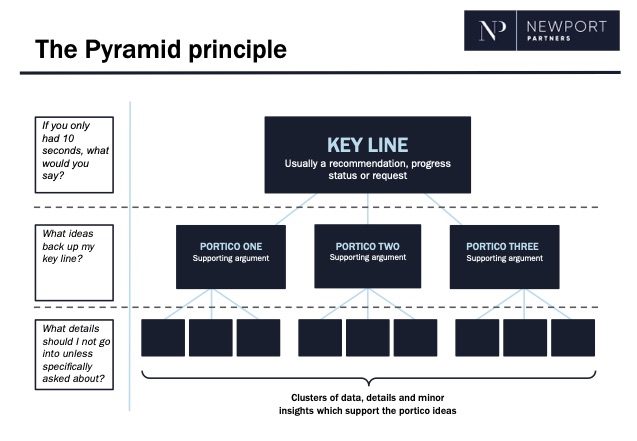The rise of the selfish communicator
Clarity-obscuring, time-wasting and reputation-harming. Speakers need to obsess about their listeners.
Executives are miffed. They regularly bemoan the quality of communication they receive. The worst culprits are often technical specialists who bamboozle them in both the written and spoken form. Opaque and verbose communication squanders people’s time and slows down organisations. Effective decisions can’t be made if decision makers can’t see what matters.
Think of the worst online user experience you have had: a clunky government website; a dreadful app; or an excruciatingly dull webinar. What these things have in common is the frustration inflicted on the end-user. Frustration that they have wasted time. In a world of incessant busyness, communicating succinctly and clearly will improve your reputation at work. To do it effectively, however, the listeners’ needs must trump the speaker’s convenience.
Clarity of speech follows clarity of thought; meaning, you need to know what you think (and why) to have any hope of clarity. As a rule of thumb, communication should be hard for the sender to prepare and deliver, and easy for the receiver to receive. In many cases, it is the opposite of that. What explains this, and what should you do about it?
Stress increases focus on yourself (not your listener)
Numerous factors have led to higher levels of stress as we all hurry about life. The scurry for organisations to achieve their growth targets leads to cost cutting and blistering targets. Organisations ask their people to do more with less. This has led to people dashing from one meeting to another and only managing the minimum preparation for their communication. But good communication takes time and everything else takes longer. It’s inconvenient but true.
Stressed people stop focusing on their teammates in preference of themselves.
Additionally, the explosion of data means more information. The potential for complex data to add insights is huge — but so is the potential for those insights to overwhelm the receiver. Combine these two points: more information to process and less time to do it: this is a flawless recipe for underdeveloped ideas to escape.
It has been known for some time that stress reduces attentional focus. Invariably it makes us focus more on ourselves than our surroundings. In collaborative settings within organisations, research suggests that stressed people stop focusing on their teammates in preference of themselves. This leads to chronic issues when communicating ideas.
Feedback: missing in action
The bar is low, people who attend presentations, committees or town halls have at least a 70% expectation that it will be boring. They are resigned to this and sit passively, feign interest and only tune into the bits that are relevant to them. Selfish communication breeds selfish listening.
It is rare that a business failure is directly attributable to a single piece of communication (or lack of it).
The consequences of poor communication are not immediately apparent either. Three things explain this. Firstly, people are seldom given accurate and timely feedback. Secondly, even if they did get it they are still overworked and this crowds out the formation of new habits. And lastly, it is rare that a business failure is directly attributable to a single piece of communication (or lack of it). They are usually a large collection of missed opportunities to communicate clearly.
Thinking up and speaking down
For simplicity, imagine there were two ways of communicating: top down and bottom up. Top down is where you lead with the conclusion and progressively go into more detail. Bottom up is the reverse where you talk through the detail and the chronology of events which lead to a conclusion. Imagine it as a Pyramid shape (below).

In the early 1970s, Barbara Minto pioneered the Pyramid principle while working at McKinsey. The Pyramid principle is a mechanism for organising your thoughts into a logical order that is easy for a reader (or listener) to understand. In our view, it is one of the single most important skills that technical professionals should be equipped with and in many cases aren’t.

The pyramid is a tool to help you find out what you really think about a topic. Using it correctly can be time-consuming, uncomfortable and cognitively taxing for the author. The output, however, is a delightful user-experience. The system prioritises the receiver, not the sender.
A new era: the compassionate communicator
The opposite of a selfish communicator is a compassionate one. Few things will serve an individual’s career better or longer than being a clear communicator. By using the Pyramid principle to organise the information in your head, you can write and speak in a more compelling manner. Doing this transports you into the good graces of your clients and stakeholders. And that is a good career move.